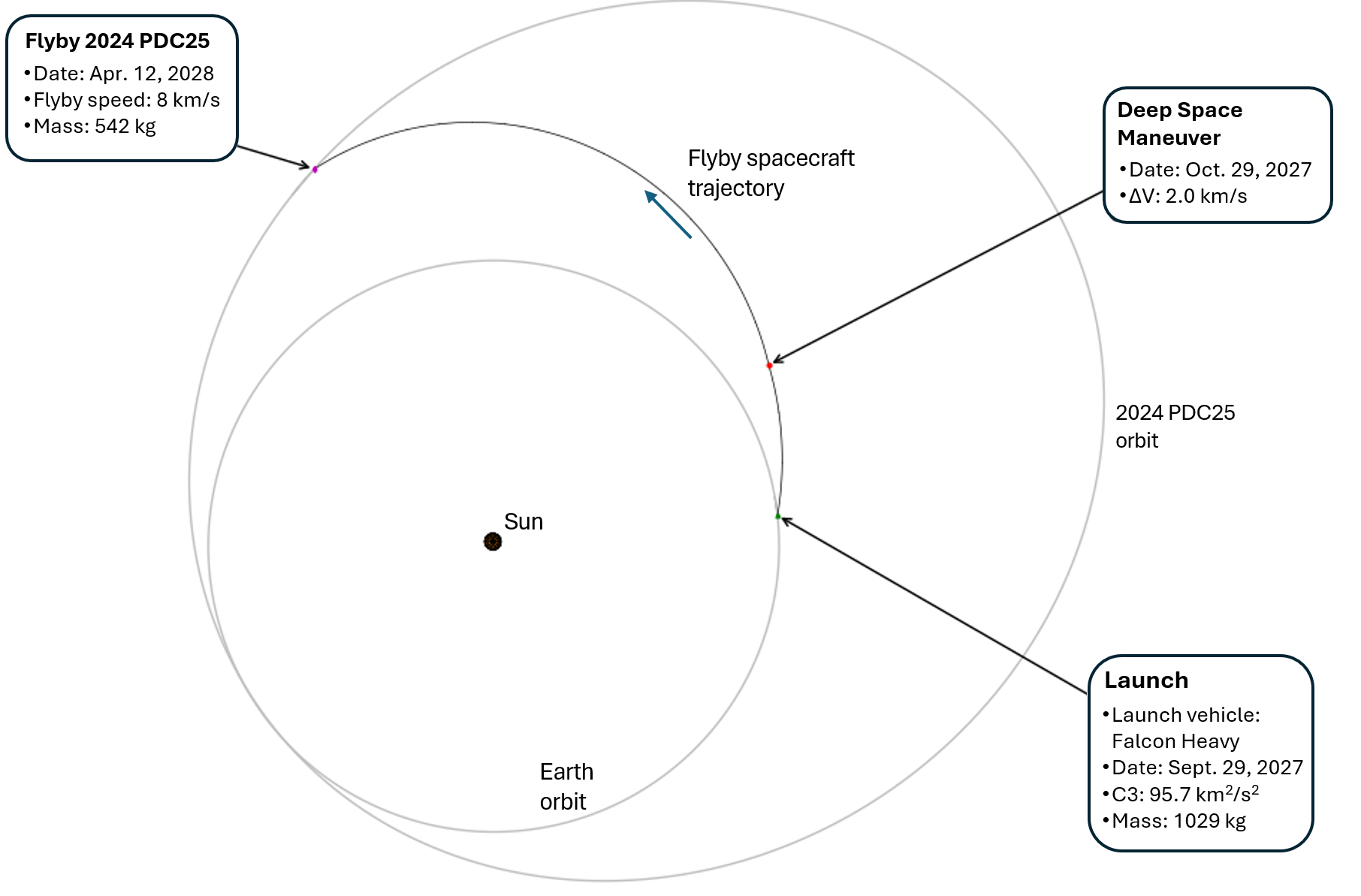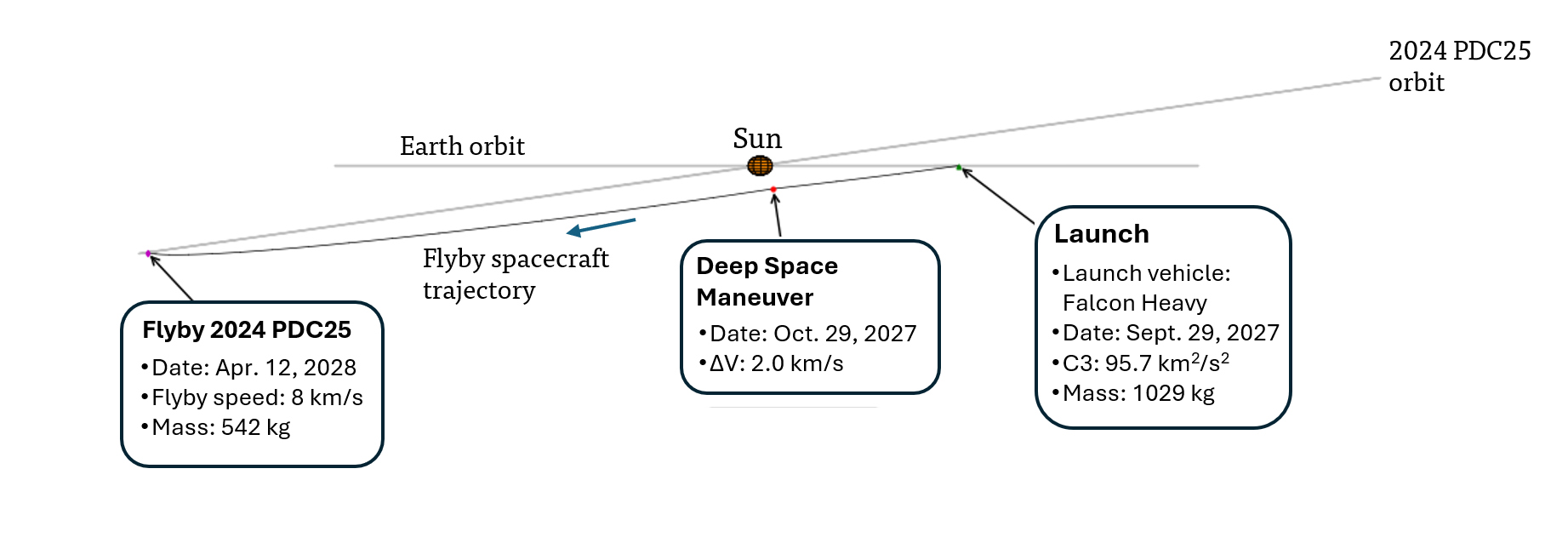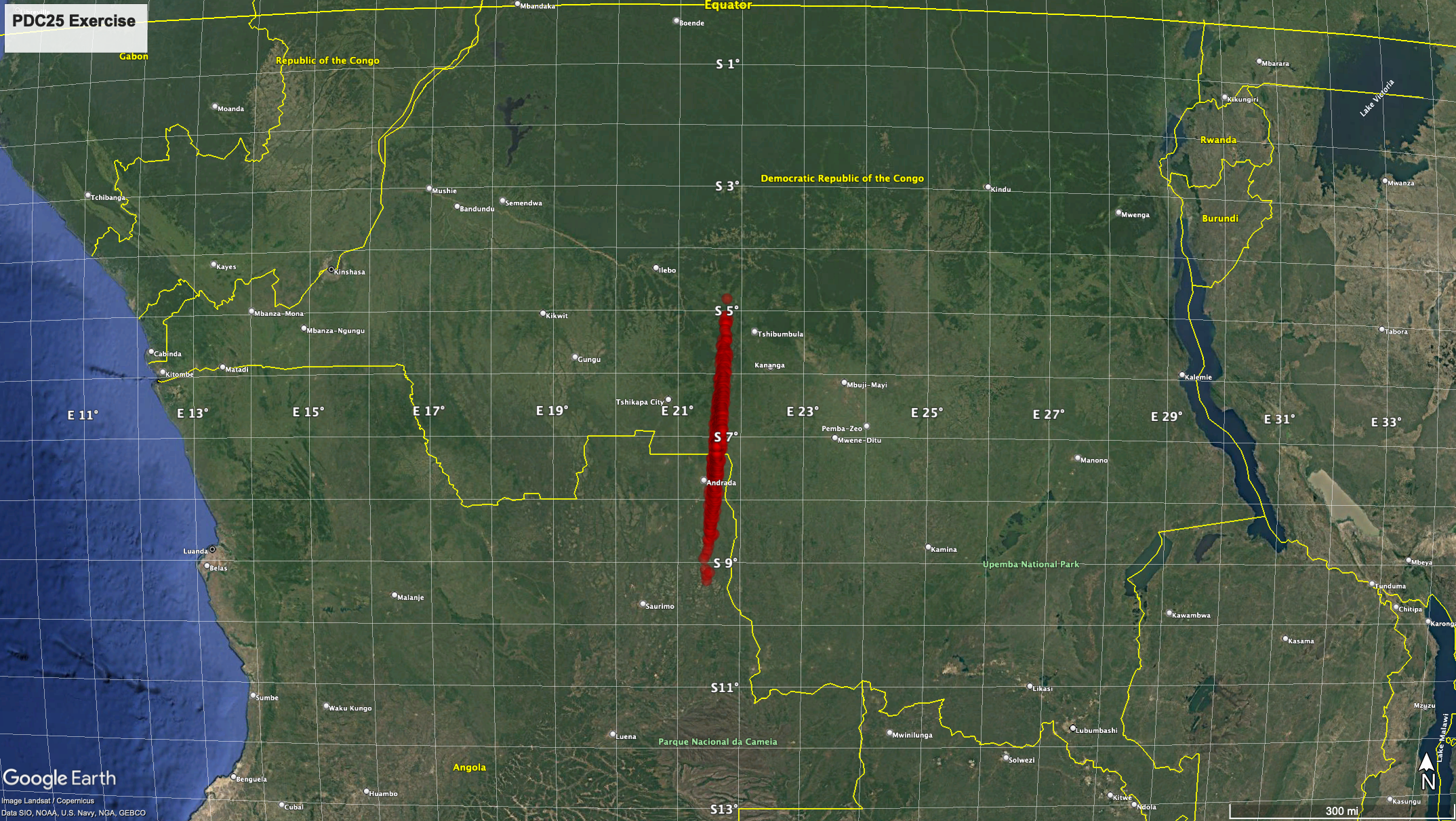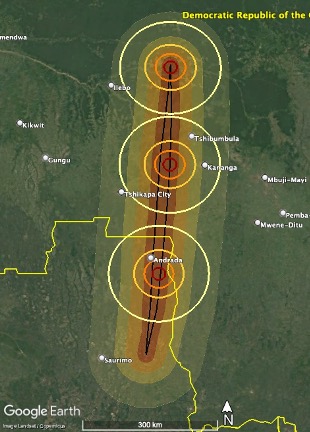



Almost four years have passed since Epoch 1. Since then, more ground-based astrometric observations were collected and, on September 29, 2025, it became 100% certain that asteroid 2024 PDC25 was on a trajectory that will impact Earth on Apr. 24, 2041, 13 years from now.
The Space Mission Planning Advisory Group (SMPAG) made several recommendations for mission options based on the information available at Epoch 1. One of these recommended mission options, a fast flyby reconnaissance mission, launched in September 2027 and encountered the asteroid on April 12, 2028. The SPK file for the spacecraft trajectory is available here.

|

|
| Fast flyby reconnaissance spacecraft trajectory from Earth to 2024 PDC25, as seen in an ecliptic plane view (left) and as seen looking at the ecliptic plane edge-on (right). The spacecraft reaches the asteroid six and a half months after launch, flying past it at distance of 100 km and a relative speed of 8 km/s. | |
Additional plots of the trajectory of the spacecraft relative to the asteroid around the time of the flyby are available here.
The data collected by the flyby mission improved the constraints on the physical properties of 2024 PDC25. Simulated images, meant to be representative of what we might expect to see from such a flyby, are available here. The asteroid is confirmed to be S-type, which implies a stony composition, between 145 to 155 m (460 to 520 ft) in spherical equivalent diameter, and with an elongated shape around twice as long as it is wide. For more information, see the Physical Properties briefing. A file with statistical realizations of the physical properties of 2024 PDC25 is available here.
Combining the derived physical properties with the impact velocity of 13.8 km/s results in impact energies from 45 to 160 Mt, most likely from 60 to 105 Mt.
The orbital tracking from the flyby mission, together with additional ground-based astrometry since Epoch 1, greatly reduce orbital uncertainties. An updated dataset of astrometric observations both from the ground and from the flyby mission are provided in the Astrometry Data Exchange Standard (ADES) format. The region of possible impact locations now spans 470 km across the border between Angola and the Democratic Republic of the Congo. A Google Earth kml file for these impact points is available here.

|
| 2024 PDC25 Impact Footprint at Epoch 2 |

|
| Google Earth maps of potential risk region and sample median damage sizes |
The orbit for the updated Epoch 2 trajectory of 2024 PDC25 has been loaded into JPL’s HORIZONS system, and can be accessed via the name “2024 PDC25a” or “PDC25a”. HORIZONS can be accessed with this object preloaded via this web-interface here. The new trajectory has also been loaded into the JPL/Aerospace Corp. NEO Deflection App.
The updated trajectory of 2024 PDC25 in SPK format is available here. The SPK file is consistent with and contains additional DE441 planetary ephemeris information over the time-span 1998-Jan-01 through impact on 2041-Apr-24, permitting retrieval of object state vectors at any arbitrary instant within that timespan.